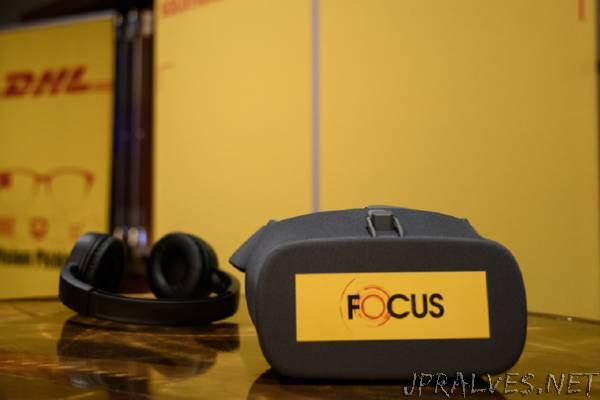
“DHL is employing a variety of new technologies to deliver packages faster and give consumers more options when it comes to where and when they want their packages arrive.
As part of an innovation showcase media event here on March 15, company executives detailed its new DHL Parcel Metro service and showed off various technologies it’s using today or at least piloting, including virtual reality, robotics and autonomous vehicles.
The new DHL Parcel Metro service has been in a pilot phase and is now officially available in three cities, Chicago, Los Angeles and New York. DHL said it will employ a kind of crowd-sourcing strategy that works with local delivery services to offer retailers a branded service. The metro services is scheduled to start in Atlanta, Dallas, San Francisco and Washington D.C. later this year.
“The DHL brand is not visible. When the retailer uses, for example, a UPS app, that disintermediates the brand,” Lee Spratt, CEO of DHL eCommerce Americas, told eWEEK.
“DHL Parcel Metro allows us to help the customers get their packages from a retail outlet, a single shipment or large quantities with a model that fits the last mile opportunity in the city.” Spratt said DHL will use its considerable logistics capabilities to help small local delivery services and newspaper delivery companies make better use of their unused capacity.
“We become the integrator to a delivery center and provide the right data at the right cost,” said Pratt. That includes three different levels of service: 2 hours, same day and next day. He said DHL Parcel Metro is strictly focused on B2C ecommerce rather than B2B where vendors and services are well entrenched.
For consumers using the service, they’ll have a kind of Uber-like experience of transparent access to the progress of the shipment by being able to see where the driver is on a mobile app and even make requests to change the delivery location or time.
Charles Brewer, CEO of DHL eCommerce, said the company has been embracing new technology as part of a digital transformation effort that started in 2010. Demonstration areas at the event here featured several autonomous robots made by Locus Robotics, which DHL use in a warehouse that the company said is helping it move packages 50 percent faster. The robots include a tablet display that a warehouse staffer can use to input an order that the robot then retrieves.
In Europe, Brewer said DHL is also using small autonomous parcel-hauling vehicles that follow a carrier to a series of delivery points so the carrier doesn’t have to go back to the vehicle and drive ahead like a postal worker does.
DHL also displayed smart glasses it’s using in its warehouses as part of the “pick and pack” process of retrieving and managing items. There was also a demonstration of virtual reality technology the company plans to use to help train new employees. The prototype app uses a smartphone and an inexpensive VR headset to virtually transport the employee to other DHL facilities to get a better understanding of how packages move through the delivery process.
DHL is also experimenting with drone delivery and already uses drones to help with property management. Earlier this month Amazon was granted a patent for a delivery method of dropping airbag-protected packages from as high as 25 feet.
Although DHL is a big international company, Spratt emphasized the need to think like a startup. DHL executives were in Silicon Valley this week meeting with a number of startups to get a sense of how they operate and make decisions.
“We’re pushing a digital agenda and speed is an asset—or a liability if you don’t have it,” said Spratt. “Silicon Valley has that fail fast mentality and implement what you learned. Older, traditional companies can get in a rut of waiting too long to make decisions.”
DHL has a “Startup Lab” that produced 150 new ideas in 2017, eight of which were finalists in a competition and put into practice. “We do this with the intent that we need to disrupt ourselves before someone else does,” said Brewer.”
